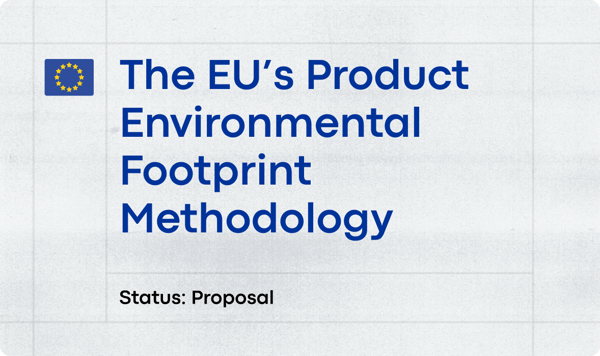"You Ask, We Answer" – brought to you by Carbonfact's Head of Science. Each week Laurent Vandepaer answers one of your questions about sustainable materials, manufacturing impact, and transitioning to cleaner energy in the apparel and footwear industry.
Question: What is the environmental impact of producing midsoles using the autoclave process, and how does it compare to other methods?
Asked by the Head of Sustainability from a footwear brand
TL;DR
While the autoclave process produces lighter midsoles, it does have a considerable environmental footprint. Two major concerns are the high consumption of electricity and nitrogen. Compared to conventional injection molding, the autoclave process can consume significantly more electricity—up to 15 times more per kg of midsole produced, according to data received from certain suppliers. This is particularly problematic in regions where the electricity grid relies heavily on fossil fuels, leading to a total carbon footprint that is up to 12 times higher than that of the injection-molding process.

The details
Mid-soles production
In running shoes, the midsole is an important shoe component for cushioning and shock absorption of running impacts. Being a critical component in footwear, midsoles are primarily made from Ethylene Vinyl Acetate (EVA), a material valued for its cushioning, lightweight properties, and durability.
EVA midsoles can be created through several processes that vary based on the desired properties of the final product. Two popular methods include compression molding and injection molding, each contributing to the midsole's weight, cushioning, durability, and form. These two methods (or a combination of them) account for over 95% of the running shoes produced.

What is the Autoclave Process?
An innovative way of producing midsoles is the autoclave process, where the foam is produced by placing it in a high-pressure, high-temperature chamber The result is a lightweight, high-performance midsole,making it particularly popular for running shoes and other athletic footwear. Footwear brands sometimes refer to this as “supercritical foam.”
 Autoclave high-pressure chamber (Image source)
Autoclave high-pressure chamber (Image source)
Environmental footprint: High electricity, CO2, and nitrogen consumption
While the autoclave process produces lighter midsoles, it does have a considerable environmental footprint. Two major concerns are the high consumption of electricity and nitrogen. Compared to conventional injection molding, the autoclave process can consume significantly more electricity—up to 15 times more per kg of midsole produced, according to our data. This is particularly problematic in regions where the electricity grid relies heavily on fossil fuels, leading to a higher carbon footprint.
Although using renewable energy could significantly reduce the carbon emissions associated with the autoclave process, it might represent a suboptimal use of renewable resources. They could, for example, be more effectively deployed to decarbonize other areas of the textile supply chain or other industries.
Moreover, while nitrogen is abundant in the air we breathe, producing nitrogen for industrial use is energy-intensive and can also be reliant on fossil resources. This further increases the carbon footprint of this production method when compared to other midsole-manufacturing techniques. The process can also use CO2 instead of nitrogen, or a mixture of both, depending on the desired properties and specific process requirements. In this example, we used nitrogen as supercritical gas input.
Here is a simple analysis, modeled in the Carbonfact platform, that visualizes the percentage contribution of various processes to the total impact of climate change:
- Electricity is the primary driver of the carbon footprint, indicating that energy efficiency and cleaner energy sources should be top priorities.
- Nitrogen, contributing a bit less than 13%, is second.
- Last is ethylene vinyl acetate (EVA), which is the material input used in this example.
Depending on the application, EVA could be replaced with Thermoplastic Polyester Elastomer, Thermoplastic Polyurethane or Polyether Block Amide.

Common Misconception: Using Injection Molding as a Proxy
A common misconception in the footwear industry is assuming that the life cycle impact of midsoles produced through the autoclave process can be accurately estimated using injection-molding data. This is due to the lack of specific emission factors for autoclaving, which stems from two main reasons:
- Footwear production has historically received less scrutiny than apparel, leading to less granular LCA datasets.
- Autoclaving is not the dominant midsole technology and is less documented. Consequently, brands often default to using injection-molding data as a proxy for generic midsole production.
As a result, brands may mistakenly believe that the autoclave process has a lower environmental impact simply because the final component is lighter. However, this overlooks the significant electricity and nitrogen consumption associated with the autoclave process, leading to counterproductive decisions.
This is where Carbonfact can help. By providing specific emission factors tailored to the autoclave process, brands gain access to the accurate data needed to make informed changes.
The bar chart below illustrates the substantial difference in impact, with one autoclave process having up to 12 times higher impact than the injection-molding process. Recent data from another autoclave supplier shows a fourfold decrease in electricity consumption, reflecting improvements in energy efficiency as operations scale up. This suggests that as production increases and equipment is utilized more efficiently, energy usage per unit decreases. In contrast, the other factory may still not be operating at full capacity, limiting its ability to optimize energy use. Nevertheless, the climate change impact of the upscaled autoclave process remains approximately 2.5 times higher than that of injection molding.

Some benefits of the Autoclave Process
Despite the environmental concerns, the autoclave process does have its advantages. It produces lightweight and high-performance midsoles, often referred to as hyper foams or super foams by footwear brands.
One of the key benefits is its cleaner chemical profile compared to injection molding. Unlike injection molding, which often involves chemical blowing agents, the autoclave process relies on physical foaming, eliminating the need for additional chemicals. By reducing the chemical load, the technology improves health and safety conditions in factories.
Another advantage of the autoclave process is that, unlike conventional injection molding with chemical foaming, which results in cross-linked (strong chemical bond) material, the physical foaming used in the autoclave process avoids cross-linking. This means these midsoles can be recycled.
The autoclave equipment is generally more modern than the often decades-old injection-molding machinery. This translates into equipment that creates less excess heat and less manual work, improving working conditions by eliminating the need for workers to stand next to significant heat sources for long periods.
As always, sustainability is a complex and multifaceted challenge. No single process can be optimized for all parameters simultaneously, and the autoclave process is no exception. While it may have a higher carbon footprint due to electricity and nitrogen use, it offers chemical and workplace safety advantages, as well as lighter and more performant midsoles. Brands must weigh these trade-offs carefully and consider the broader impact of their choices.
Exploring alternatives

As brands continue to seek ways to reduce the environmental impact of midsole production, several alternative processes are being explored. Here are some examples:
- Adidas' 3D printed midsoles are created using Carbon’s Digital Light Synthesis™ technology, which forms precision-tuned lattice structures based on athlete data for optimized performance.
- Nike's ReactX foam is produced through an advanced injection molding process, designed to balance high-energy return with a reduced carbon footprint, overcoming the limitations of traditional compression molding.
- Salomon's midsoles are made using BASF's Elastollan® thermoplastic polyurethane (TPU) and are manufactured with Supercritical Fluid (SCF) foaming technology, resulting in lightweight, durable midsoles with enhanced performance.
These alternative midsole production processes show promise in potentially decreasing environmental impacts. However, without publicly available and comprehensive LCA datasets, it is challenging to validate their true environmental benefits for now.
If anyone has data about innovative processes in midsole production, we would be happy to model it and report back!
About Carbonfact
Carbonfact is the only Sustainability Software built for the apparel and footwear industry, helping brands like Allbirds, New Balance, and On to measure, report, and reduce their footprint while taking care of their data challenges.
While our platform does the heavy lifting, our team of LCA, climate, compliance, and data experts acts as an extension of your sustainability team. Our science team supports clients by providing Life Cycle Assessment (LCA) modeling of alternatives and integrating bespoke emission factors into our platform. This allows for a more accurate assessment of the environmental benefits and potential downsides of these production processes, helping brands make better-informed sustainability decisions.
Do you have questions about sustainable practices, manufacturing impacts, or energy transitions in the apparel and footwear industry? We'd love to hear from you! Send us a DM or email: youaskweanswer@carbonfact.com








 Lidia Lüttin
Lidia Lüttin

![[Guide] Carbon accounting for fashion, textile, apparel, and footwear companies](https://www.carbonfact.com/hs-fs/hubfs/CA%20-%20Opt1.png?width=600&name=CA%20-%20Opt1.png)
 Angie Wu
Angie Wu